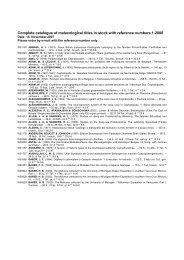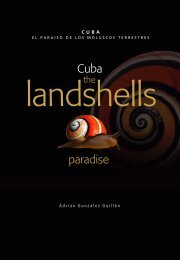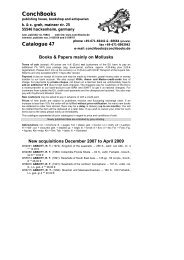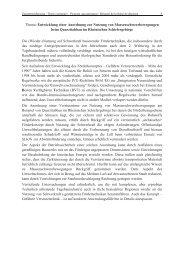Madeira Canary Islands Azores – Fishes Dr. Peter Wirtz
Madeira Canary Islands Azores – Fishes Dr. Peter Wirtz
Madeira Canary Islands Azores – Fishes Dr. Peter Wirtz
You also want an ePaper? Increase the reach of your titles
YUMPU automatically turns print PDFs into web optimized ePapers that Google loves.
6<br />
Devil rays (Mobulidae)<br />
Manta ray (Manta birostris)<br />
Up to 6.7 m wing span. <strong>Madeira</strong>, <strong>Canary</strong> <strong>Islands</strong>, <strong>Azores</strong>. 0 <strong>–</strong> 40 m depth.<br />
Devil rays are large, free-swimming rays that feed on plankton. The head flaps direct water into the mouth.<br />
Plankton (and small fish) is then sieved out of the water with gill rakers. These head flaps can be rolled up and<br />
then project forward like to large horns, which has given these animals the name „devil rays“. Frequently,<br />
shark suckers are attached to manta rays. To see a manta ray „flying“ through the water is an unforgettable<br />
experience. These inquisitive animals often circle around divers for considerable time before moving on. The<br />
genus Manta differs from the genus Mobula (next double page) by its much longer horns and by having the<br />
opening of the mouth at the front. Both photos Pedro Monteiro.<br />
8<br />
Small devil ray (Mobula tarapacana)<br />
Up to 4 m wing span. <strong>Madeira</strong>, <strong>Canary</strong> <strong>Islands</strong>, <strong>Azores</strong>. 0 <strong>–</strong> 30 m depth.<br />
The genus Mobula differs from the genus Manta (previous double page) by its much shorter horns and by the<br />
fact that the mouth opens at the lower side of the animal. The back is greenish (brownish to black in the manta<br />
ray). Mobula-species usually are much shyer than manta rays and do not let divers approach as closely. The<br />
belly of Mobula tarapacana is white in the front and dark on the rear. Similar species with completely white<br />
belly or spotted belly (M. mobular and M. japanica) may also occur in the area but have not yet been<br />
recorded. Please send photos of such animals to peterwirtz2004@yahoo.com ! Both photos <strong>Peter</strong> <strong>Wirtz</strong>.









